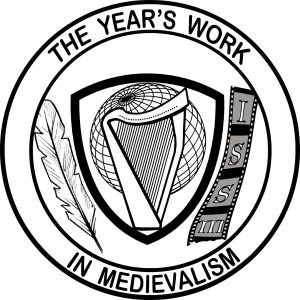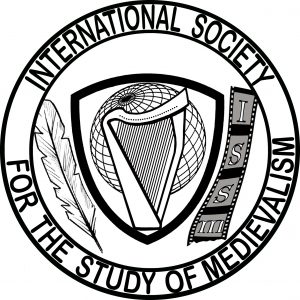Valerie B. Johnson & Renée Ward
“Nothing lasts forever.” These words open “Same Old Scene,” one of the most popular
songs by the British glam-rock-pop band Roxy Music (from their 1980 album Flesh and
Blood). Although this song focuses on the pleasure-pain element of love relationships,
the lyrics feel apt in the current moment (summer 2021), as we slowly emerge from
eighteen months of various pandemic lockdowns and restrictions. Yet, as the crooning
lover (Bryan Ferry’s dulcet tones) of the song also notes, “It’s still the same old movie
that’s haunting me . . . The same old scene.” COVID-19 infections are again on the rise
worldwide, and the full effect of vaccination programs have yet to be tested. People are
nostalgic for the pre-pandemic days, “the before times,” eagerly awaiting a return to
“normal,” yet simultaneously concerned about new variants spreading (at this writing:
Delta) and so many people still unvaccinated. A return to the past is desired, but also
feared: the climate is thus one of optimism tinged with pessimism. Medievalism stands
at intersections: of nostalgia and history; of hope and realism.
We wrote the Introduction to The Year’s Work in Medievalism 33 (2018) in summer
2020 lockdowns, thinking that the next months would be less traumatic, hoping the
pandemic and its impact would be fairly short-lived. That was not to be. The last year
especially has been tumultuous, continually forcing us all to work and live outside of our
comfort zones. Loss has and continues to be keenly felt by many, whether it be the loss
of loved ones, of personal health (Long-COVID, anxiety, depression), economic
hardships, or other forms of deprivation and insecurity. It seemed only fitting, then, that
we open Issue 34 with “Maverick Medievalism,” a piece celebrating the late William
Calin (1936-2018), whose career had a profound impact on the disciplines of medieval
and medievalism studies. Although Bill passed before COVID-19 announced its
presence globally, Richard Utz’s eulogy for him reminds us—as has the pandemic—
about the importance of relationships in our personal and professional lives. Those of us
who experienced Bill’s generosity, wit, and intellect are better scholars and people for it;
those of us who never met him find his work an admirable monument.
The theme of Issue 34—Intersections—in some way reflects the shape of our world at
present. Many of us have experienced, and, to some degree, will continue to experience
“blended” work and learning environments, bringing both into our homes at a level
previously unprecedented. We have become, as the UK higher education sector likes to
put it, “adaptable,” shifting space, tools, and approach to the work we do, reinventing
ourselves as scholars and teachers, as our context(s) evolves.
Adaptability and identity are likewise common threads in this issue. The articles that
follow the eulogy for Bill Calin range from analyses of modern literary reimaginings of
medieval figures such as Æthelred the ‘Unræd’ and Joan of Arc—finding redemption for
traditionally maligned figures and connections to iconic ones in unexpected places—to
explorations of gender and sexual identities and the effects (and affects) of trauma in
adaptations of the Arthurian legend in text, graphic novels, music, and television. The
Arthurian cluster also includes a “craft essay” in which the scholarly and creative
endeavors intersect, demonstrating the often-symbiotic nature of the two practices. The
volume concludes with another creative piece, one that returns us again to the theme of
pandemic-related loss but with a comedic twist. A tongue-in-cheek dive into the world of
medieval anchorites and anchoresses reminds us that the past year and a half has
connected us to the Middle Ages in unexpected ways. Overall, then, the articles
collected here demonstrate how medievalism bridges multiple traditional boundaries,
whether of discipline, genre, historicism, medium, or mode. Medievalism offers
intersections.
Issue 34 is also a transitional one for us, as we move the journal to a new digital home
and start to build our catalogue of back-issues. We are starting to provide key-term lists
for all of our issues, starting with Issue 34. These features are not yet ready, but, when
done, we hope they will make our new archive more searchable and user-friendly.
Watch for updates as we release new materials on the site.
We remain, as ever, grateful to our advisory board, our many peer readers, and our
authors for their work on this issue. We owe particular thanks to Emily Leverett for her
work liaising with the creative writers; to Carol Robinson and Scott Manning for their
work on the journal’s new home; and to the Transitional Governance Committee of the
International Society for the Study of Medievalism, for working to develop the Society’s
first formal Constitution and Bylaws, and, in the process, renewing the relationship
between ISSM and The Year’s Work in Medievalism.
Be well.
VBJ & RW
2021
Volume 34 (2019) Edited by Valerie Johnson & Renée Ward
The author retains copyright and has agreed that this essay in The Year’s Work in Medievalism will be made available under the following Creative Commons AttributionNonCommercial-NoDerivs 3.0 Unported License. This means that readers/users must: attribute the essay, may not use the essay for commercial purposes, and may not alter, transform, or build upon the essay



